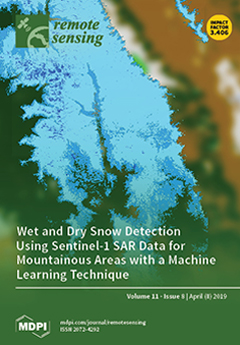It has been found that the concentration of atmospheric methane (CH
4) has rapidly increased since 2007 after a decade of nearly constant concentration in the atmosphere. As an important greenhouse gas, such an increase could enhance the threat of global warming. To better quantify this increasing trend, a novel statistic method, i.e. the Ensemble Empirical Mode Decomposition (EEMD) method, was used to analyze the CH
4 trends from three different measurements: the mid–upper tropospheric CH
4 (MUT) from the space-borne measurements by the Atmospheric Infrared Sounder (AIRS), the CH
4 in the marine boundary layer (MBL) from NOAA ground-based in-situ measurements, and the column-averaged CH
4 in the atmosphere (X
CH4) from the ground-based up-looking Fourier Transform Spectrometers at Total Carbon Column Observing Network (TCCON) and the Network for the Detection of Atmospheric Composition Change (NDACC). Comparison of the CH
4 trends in the mid–upper troposphere, lower troposphere, and the column average from these three data sets shows that, overall, these trends agree well in capturing the abrupt CH
4 increase in 2007 (the first peak) and an even faster increase after 2013 (the second peak) over the globe. The increased rates of CH
4 in the MUT, as observed by AIRS, are overall smaller than CH
4 in MBL and the column-average CH
4. During 2009–2011, there was a dip in the increase rate for CH
4 in MBL, and the MUT-CH
4 increase rate was almost negligible in the mid-high latitude regions. The increase of the column-average CH
4 also reached the minimum during 2009–2011 accordingly, suggesting that the trends of CH
4 are not only impacted by the surface emission, however that they also may be impacted by other processes like transport and chemical reaction loss associated with [OH]. One advantage of the EEMD analysis is to derive the monthly rate and the results show that the frequency of the variability of CH
4 increase rates in the mid–high northern latitude regions is larger than those in the tropics and southern hemisphere.
Full article





